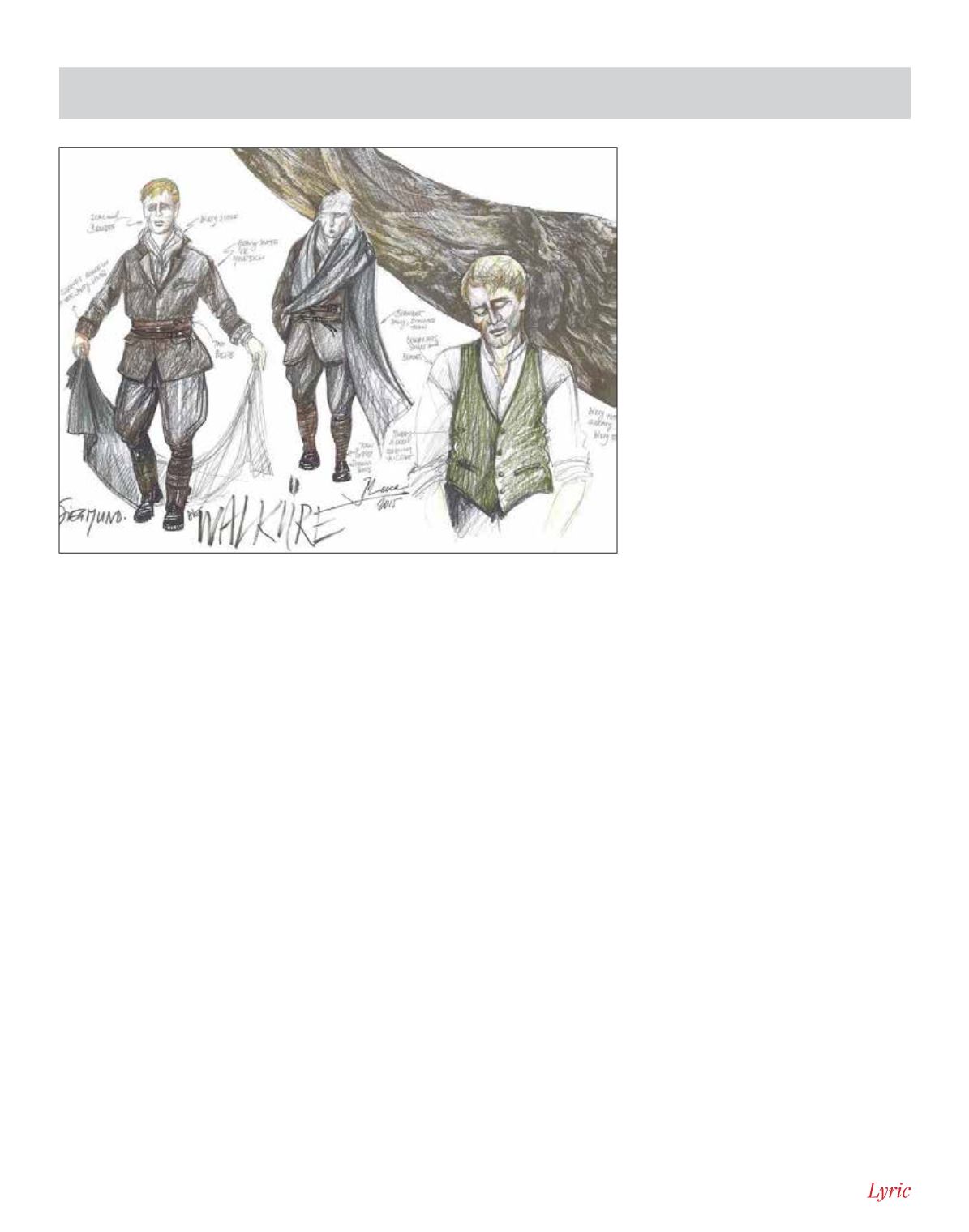

34
|
November 1 - 30, 2017
Director’s Note –
Die Walküre
L Y R I C O P E R A O F C H I C A G O
The world has now moved on from
the schematic, colorful world of
Das
Rheingold
with its bold delineation of
the worlds of above, on, and under the
earth. The Gods have transformed from
a ramshackle band of Nomadic deities
into an Imperial Family suitably housed
in an awe-inspiring palace, seemingly all
powerful but at the same time hemmed in
by inherited obligations from the past and
the murky compromises of political reality.
The first two acts of
Die Walküre
therefore follow this narrowing field
of possibility by focusing down onto
intensely domestic encounters. The first
act takes place entirely in Hunding’s house
and concerns husband/wife and brother/
sister, but of course, it is still part of an
elemental epic in which a tree bearing
a magic sword grows through the walls
of the house, and Spring bursts into the
living room –- not something that happens
very often in everyday suburbia. And this
“domestic” setting also includes one of the
greatest expositions of “Anagnorisis” – the
moment of recognition in Aristotelian
tragedy – in which brother and sister,
Siegmund and Sieglinde, discover each
other’s identities. The fact that they then
consummate this recognition passionately
and sexually is Wagner’s own particular
take on the Aristotelian device.
In the second act, partly set inside the
“Imperial Palace” (Valhalla), the characters
are equally intimately connected: husband/
wife, father/daughter, brother/sister. It
is useful to remember that despite the
Ring
’s epic scale and occasional scenes of
spectacle, it is primarily a series of two-
handed confrontations. In the ultimate
operatic “domestic row” between husband
and wife (Wotan and Fricka), we learn that
the world is regulated by a strict sense of
proprieties. Wotan may rampage around
the world creating a tribe of daughters,
the Valkyries, but he cannot get away
with secretly manipulating human beings
to suit his purposes. He is fenced in by
convention and social order, which is what
gives this work its Ibsenesque quality,
highlighting the struggle of the individual
to come to terms with the obligations and
rules of society. Wagner’s Gods are very
much powerful citizens of a social and
moral world which we can all recognize,
rather than the carefree hedonists of
Olympus.
Wagner’s acute sense of human
psychology is nowhere better
demonstrated than in the relationship
between Wotan and his daughter,
Brünnhilde, and a large proportion of the
five-hour drama is given over to exploring
this. Of course she worships her father,
and cannot believe that her hero is tied
down and compromised by political and
historical reality. Like an impetuous and
idealistic teenager she takes up the cause
of rescuing Siegmund and Sieglinde,
believing that in defying her father’s orders
she is nonetheless expressing his inner
desire. This disobedience merely serves
to highlight for Wotan the miserable
compromise he has been forced to make,
and so, shamed by his daughter’s naïve
but principled idealism, he reacts with
the wounded fury of a man whose own
hypocrisy has been exposed.
The emphasis in
Walküre
on social
relationships and obligations and human
psychology suggests to us that this
drama is moving forward in time from
the world of
Das Rheingold
, bringing
us into an era in which we can all too
readily understand and identify with the
problems and conflicts that the characters
have to solve. Our relationships with
our children and our partners may not
be on such an epic scale, but they are
not materially of a different order to the
personal relationships explored here.
Walküre
moves us into the modern world,
albeit still one at a significant remove from
our contemporary experience, perhaps
abstractly located in the middle of the
last century – that is, if we need to define
an exact period. And the methodology
of our production remains the same, as
it will throughout the cycle. We set out
with our designs to create a theatrical
framework for the stage which continually
allows us to revert to its pristine, virginal
condition: the empty stage. And on that
empty stage we continually recreate the
illusion in which you will believe, even
though we will continually reveal to you,
show you, demonstrate even, how the
illusion is created. The story of this second
instalment may have become more human,
more intimate, more psychological, but it
remains a story which we will tell in the
spirit of that magical pact between narrator
and listener: “Once upon a time….”
—
David Pountney
Costume designer Marie-Jeanne Lecca's costume sketch for Siegmund.
















